This bird is easily identifiable by its striking black and white plumage. It boasts an exceptionally long tail, a white rump, and a white belly. Its distinctive yellow eyes provide a stark contrast to the vibrant blue-black coloration of its head, back, chest, and wings.
Meet the Magpie Tanager:
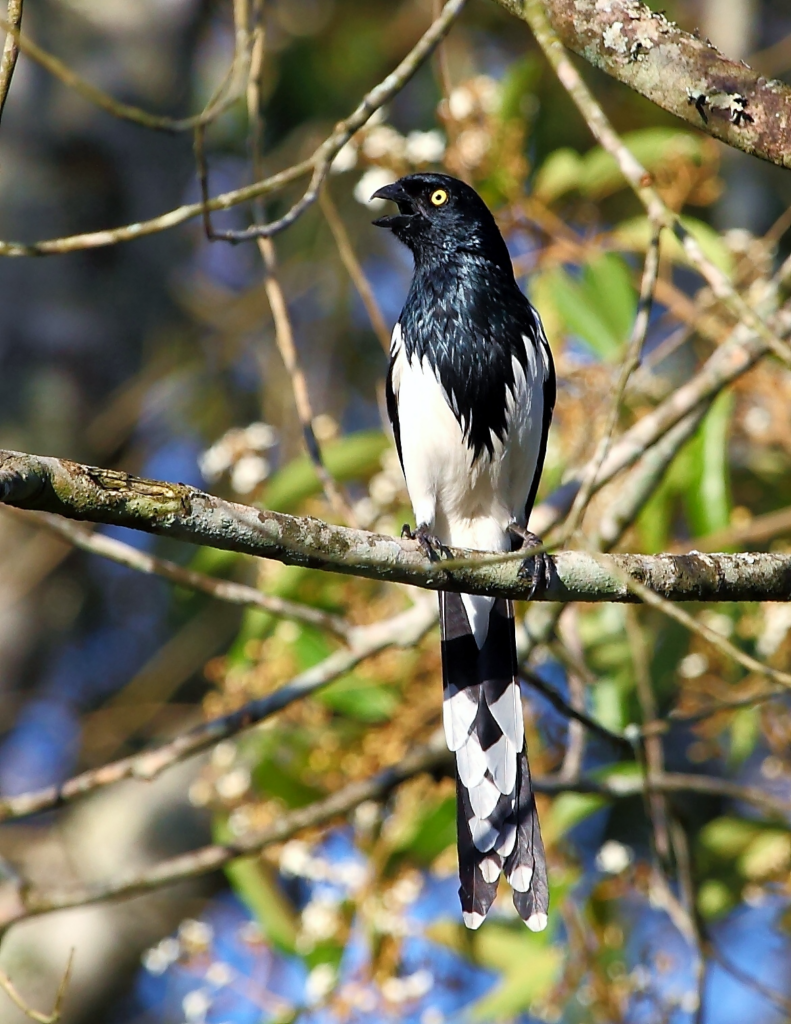
“File:Cissopis leverianus – Magpie Tanager; Dourado, São Paulo, Brazil.jpg” by Hector Bottai is licensed under CC BY-SA 4.0.
The magpie tanager (Cissopis leverianus) hails from South America and stands as a unique member of the singular genus Cissopis. As its name suggests, this striking species sports a blue-black and white plumage, bearing a resemblance to the European magpie. Distinguished by its exceptional length, measuring between 25 to 30 cm (9.8 to 11.8 inches), a significant portion of which is attributed to its impressive tail, it claims the title of the longest tanager. In terms of weight, it tips the scales at 69 to 76 grams (2.4 to 2.7 ounces).
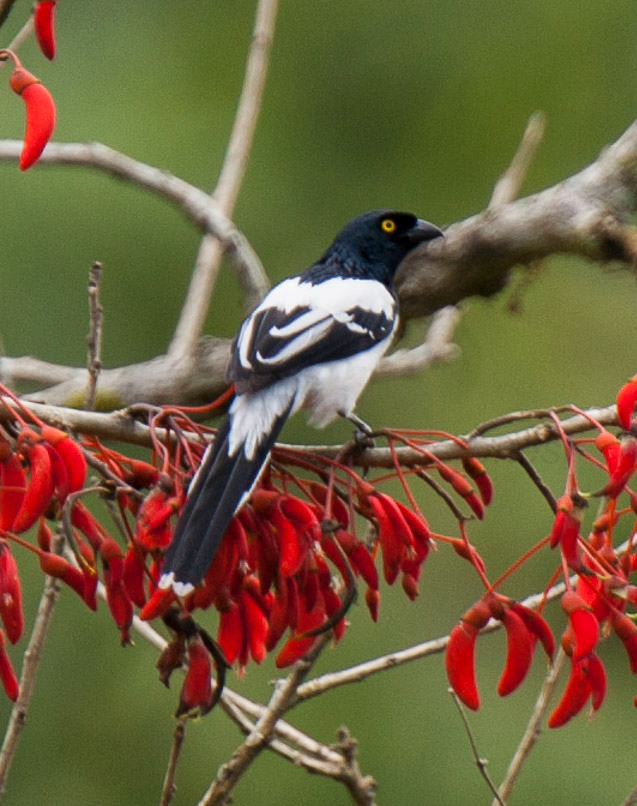
“File:Magpie Tanager – Manu NP – Perù 8577 (22954466240).jpg” by Francesco Veronesi from Italy is licensed under CC BY-SA 2.0.
The magpie tanager tends to appear conspicuously in the company of its noisy counterparts, forming pairs or groups of up to 10 individuals.
It frequently joins mixed-species flocks and is known for its distinctive habit of moving its long tail up and down.
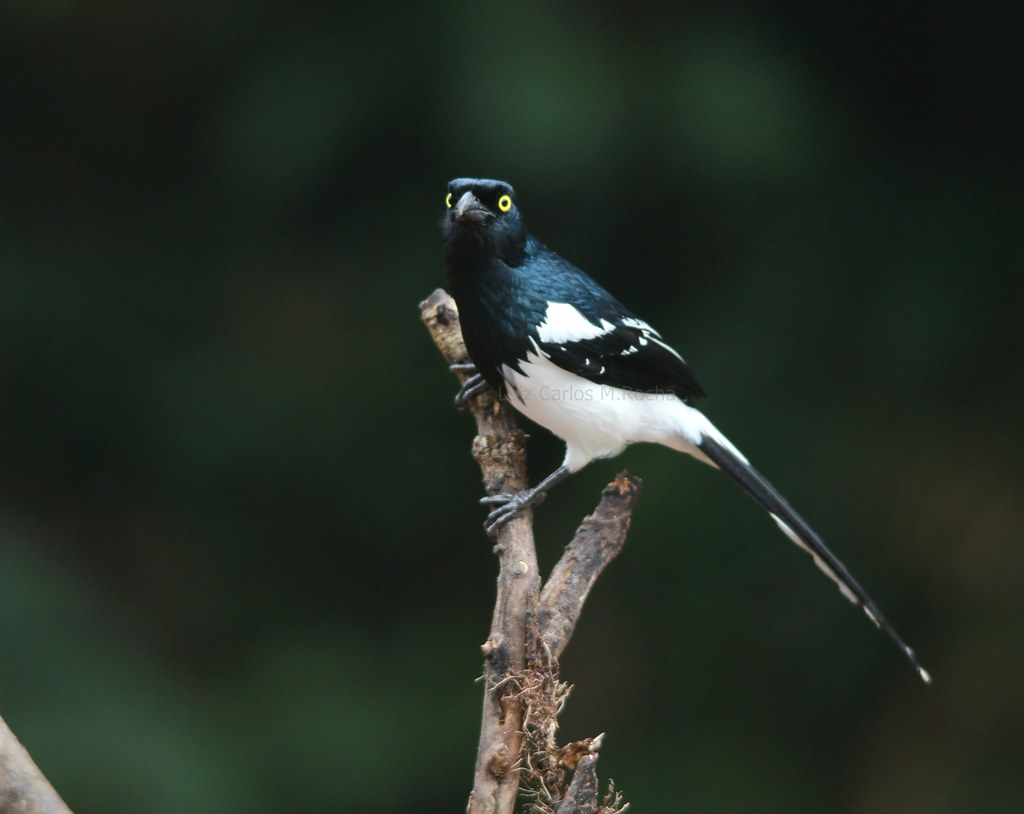
“Tietinga – Cissopis leverianus” by luizmrocha is licensed under CC BY-SA 2.0.
Distribution and Habitat: Magpie Tanagers can be spotted in the Andes across regions in Venezuela, Colombia, Ecuador, and Peru. They also extend their habitat into Brazil, Argentina, and Bolivia, particularly thriving at elevations ranging from 1200 to 2000 meters.
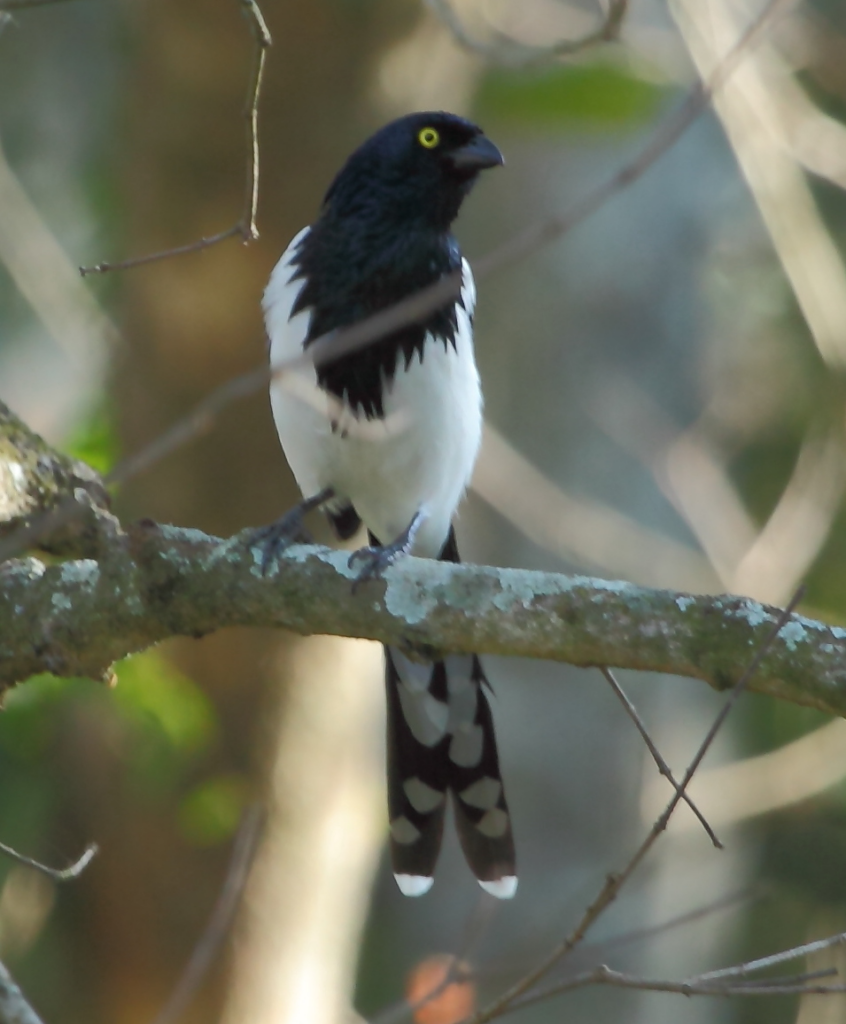
“File:Cissopis leverianus-Magpie Tanager.JPG” by Hector Bottai is licensed under CC BY-SA 3.0.
In their natural habitat, these tanagers are often found in river floodplains, along forest edges where grass and shrubs abound. They also venture into plantations close to human settlements.
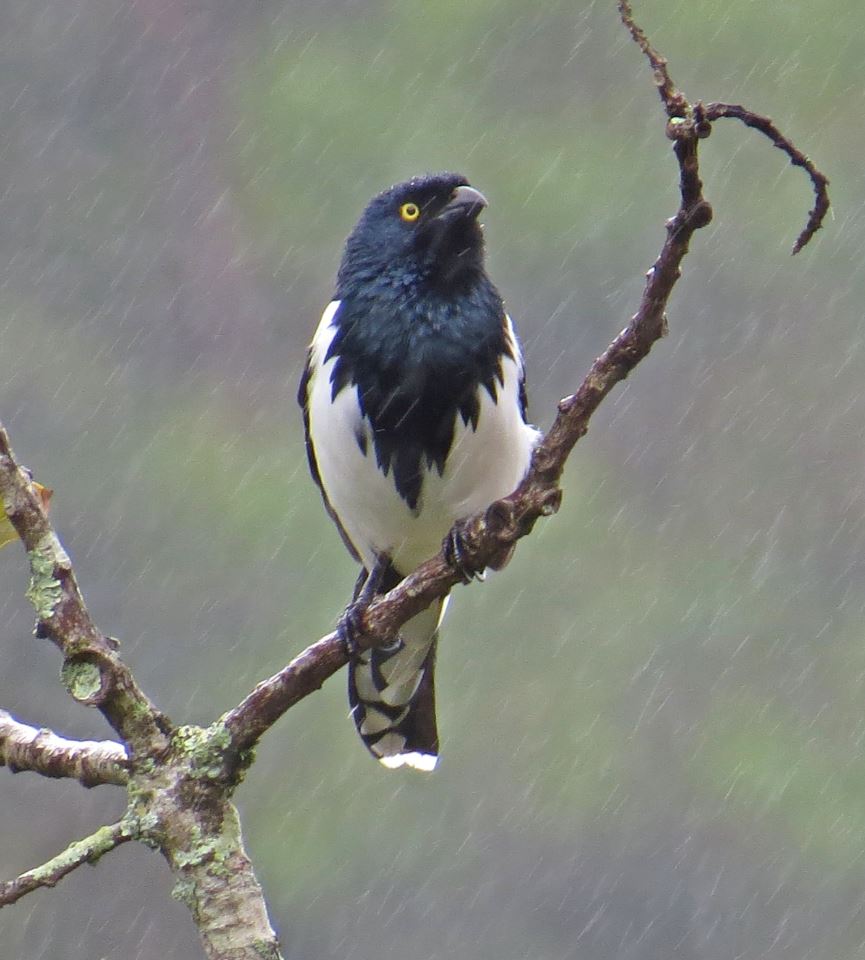
“magpie tanager, tangara pillurion, tangara urraca, tietinga” by Diogo Luiz is licensed under CC BY-SA 4.0.
Diet: The dietary preferences of the Magpie Tanager encompass seeds, fruits, and insects.
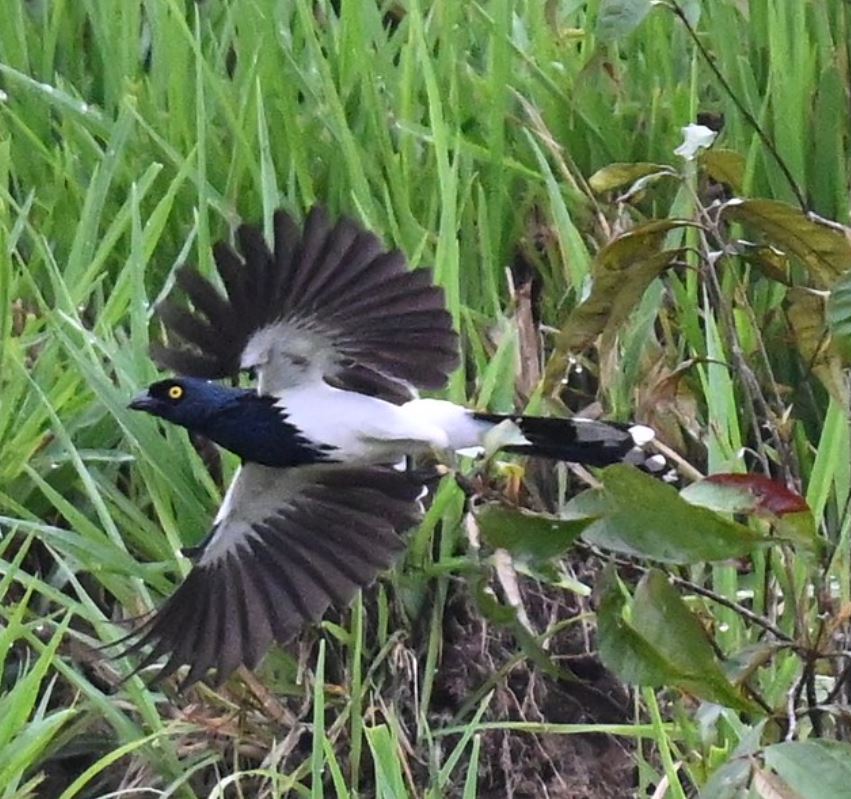
“Magpie Tanager” by Wildreturn is licensed under CC BY 2.0. (cropped)
Breeding: When it comes to breeding, these birds construct cup-shaped nests thoughtfully lined with grass, leaves, or other plant materials. They position these nests near the ground, typically in short trees or shrubs amidst dense vegetation. During the breeding season, Magpie Tanagers typically lay clutches of two eggs characterized by their red/brown hue adorned with brown spots. When raised in captivity, these birds dutifully incubate their eggs for a period spanning 12 to 13 days.
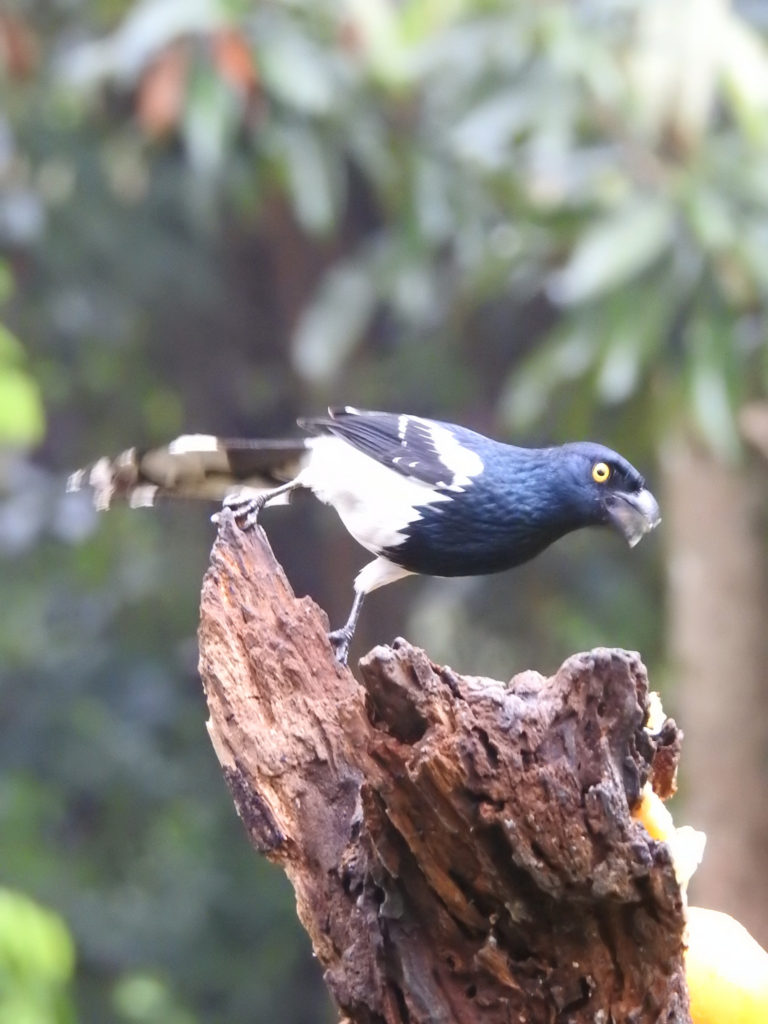
“magpie tanager, tangara pillurion, tangara urraca, tietinga” by María Regina Silva is licensed under CC BY 4.0.
This bird is regarded as of Least Concern on the IUCN Red List.
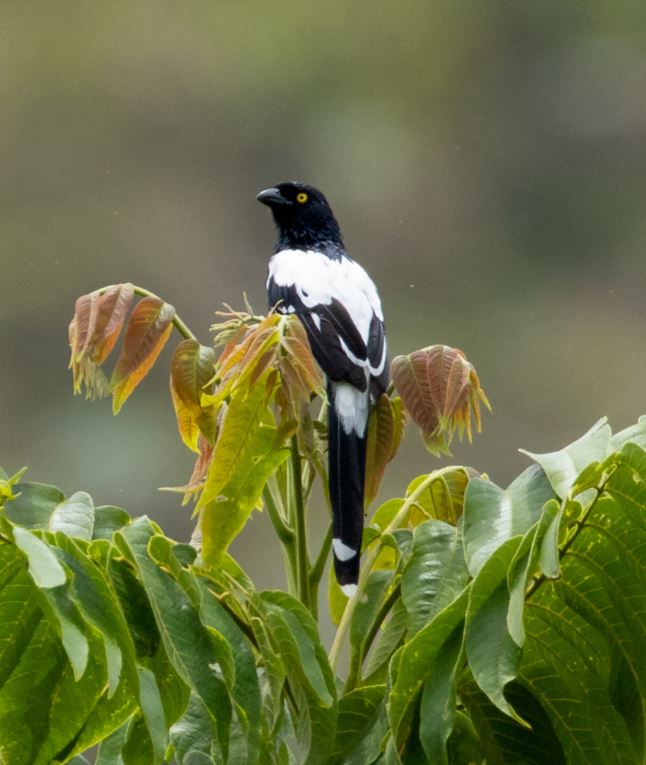
“magpie tanager, tangara pillurion, tangara urraca, tietinga” by thibaudaronson is licensed under CC BY-SA 4.0. (cropped)
Watch this bird next:




